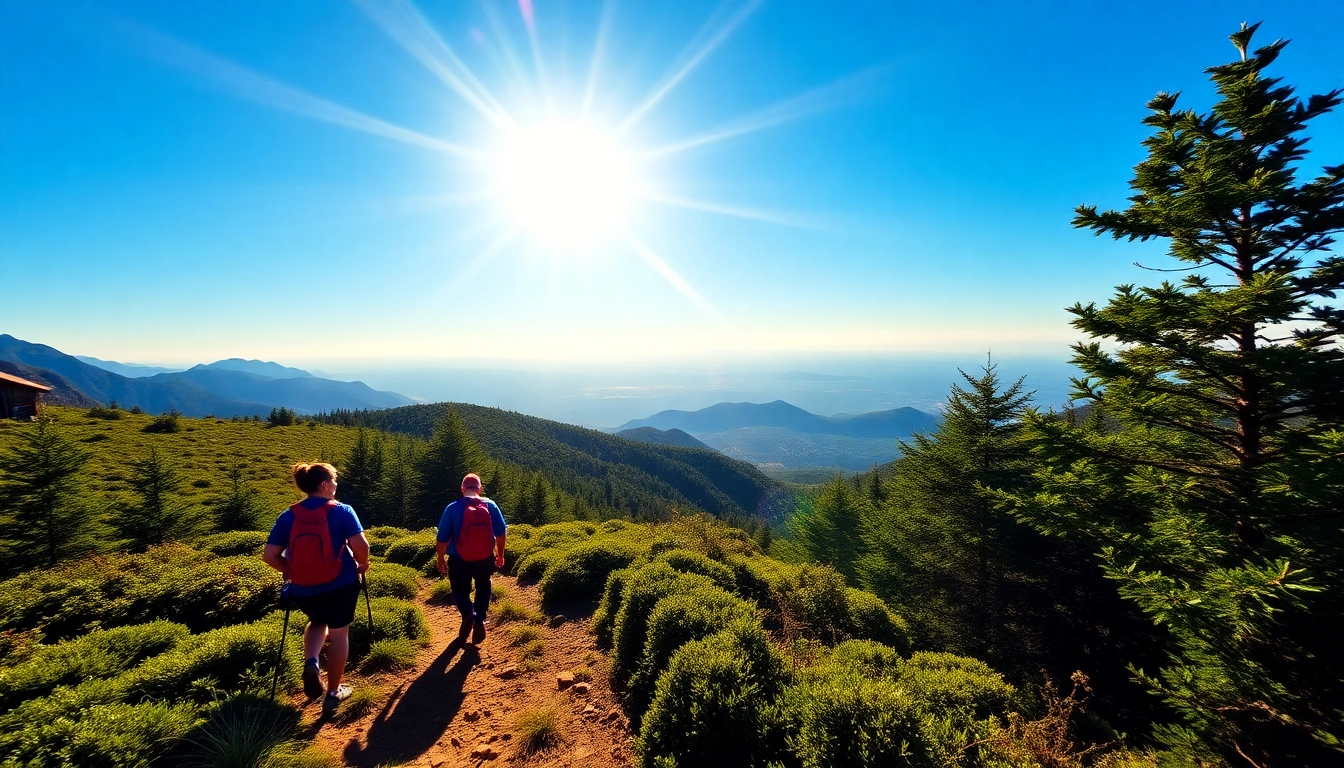Understanding Hiking in Lombok: Activities, Benefits, and Key Differences
Introduction: Embracing the Adventure of Hiking in Lombok
Nestled within Indonesia’s stunning archipelago, Lombok offers a breathtaking array of natural landscapes, from lush forests to soaring mountains. For outdoor enthusiasts, hiking in Lombok is more than just a physical activity; it is a profound way to connect with nature, explore diverse terrains, and experience local culture firsthand. Whether you’re a seasoned trekker or a casual nature lover, Lombok’s trails promise adventure, tranquility, and health benefits that can transform your perspective on outdoor recreation. This comprehensive guide aims to deepen your understanding of hiking in Lombok, distinguish it from similar activities like trekking, and equip you with practical tips for an enriching experience.
Understanding Hiking in Lombok: Activities, Benefits, and Key Differences
Definition of Hiking and Its Significance in Lombok
Hiking, in its essence, is a vigorous walk primarily undertaken along designated trails or natural footpaths. Unlike casual strolling, hiking involves sustained physical effort across varied terrains, often in the open countryside or mountainous regions. In Lombok, hiking is intrinsically linked to the island’s rich natural heritage—climbing Mount Rinjani, exploring waterfalls in the north, or wandering through pristine forests. It serves as a means of adventure, physical fitness, and mental rejuvenation. The activity fosters a deep appreciation of nature’s beauty and promotes sustainable tourism, supporting local economies and conservation efforts.
Hiking vs Trekking: Key Variations and When to Choose Each
While often used interchangeably, hiking and trekking embody distinct outdoor pursuits. Hiking typically refers to shorter, less demanding walks along accessible trails, often within a day’s duration. It is suited for beginners or those seeking leisure and exercise. Conversely, trekking involves multi-day journeys through remote, rugged, and often challenging terrains. It requires meticulous planning, specialized gear, and a higher level of physical preparedness.
In Lombok, hiking might be climbing the slopes of Mount Rinjani during a day trip, whereas trekking could entail a multi-day expedition across the lesser-known trails of Senaru or the highlands, camping overnight under the stars.
Knowing the difference helps in choosing the right activity aligned with your fitness level, experience, and adventure aspirations.
Advantages of Hiking for Physical and Mental Well-being
Engaging in hiking in Lombok offers a multitude of health benefits. Physically, it enhances cardiovascular endurance, strengthens muscles, improves balance, and boosts overall fitness. Consistent activity can help control weight, lower blood pressure, and reduce risks of chronic diseases.
Psychologically, hiking fosters mental clarity, reduces stress levels, and enhances mood through exposure to natural environments, sunlight, and physical activity. The tranquility of Lombok’s natural scenery can serve as a powerful antidote to modern-day stressors, promoting emotional resilience and mental health. Moreover, the sense of achievement after conquering steep trails or reaching scenic viewpoints can significantly boost self-confidence.
Preparation and Essential Gear for Hiking in Lombok
Choosing the Right Hiking Equipment and Footwear
Proper preparation begins with selecting suitable gear. Footwear is arguably the most critical component; hiking boots with good ankle support and tread are essential to navigate rocky or uneven terrain safely. Lightweight, moisture-wicking clothing adaptable to weather conditions will keep you comfortable—consider layering options for chilly mornings or sudden rain.
Additional equipment may include a sturdy backpack, trekking poles to reduce joint strain, navigation tools (maps, GPS devices), headlamps, first aid kits, and sun protection (hats, sunglasses, sunscreen). For technical trails, specialized gear like harnesses or climbing equipment might be required, but for most Lombok hikes, standard trekking gear suffices.
Planning Your Route and Safety Precautions
Thorough planning is vital. Study trail maps, consult local guides, and understand trail difficulty levels. Always inform someone about your itinerary and expected return time. Carry enough water, nutritious snacks, and emergency supplies.
Safety measures include assessing weather forecasts, avoiding overly ambitious routes if you lack experience, and respecting trail regulations. In remote areas like Mount Rinjani, hiring certified guides ensures safety and enriches your experience through local insights.
Managing Weather and Environmental Challenges
Lombok’s climate varies with altitude and season. The dry season (April to October) offers clearer, more predictable weather ideal for hiking. Rain during monsoon months (November to March) can make trails slippery and increase risks of flash floods.
Prepare for environmental challenges such as sudden temperature drops, wind gusts, or limited shelter. Layering clothing, carrying rain gear, and staying informed about weather updates help mitigate these issues. Respect environmental conditions by staying on designated trails and practicing Leave No Trace principles to minimize ecological impact.
Top Hiking Trails and Destinations in Lombok
Popular Mountain Trails and Scenic Routes
Lombok’s crown jewel for hikers is Mount Rinjani, Indonesia’s second-highest volcano, offering challenging multi-day hikes with panoramic views, volcanic craters, and hot springs. The ascent typically begins from Senaru or Sembalun Village, with routes varying in difficulty and scenery.
Other notable trails include the Sendang Gile and Tiu Kelep waterfalls hikes, accessible in a day, and the opportunity to explore the lush forests and cascading waterfalls of the north.
For less strenuous options, the Teletubbies Hill and Mount Pengsong trails provide scenic viewpoints and gentle walks suitable for families or casual hikers.
Hidden Gems and Less-Traveled Paths for Adventurers
For avid explorers seeking authentic experiences, lesser-known trails like the Malimbu Hill, which offers incredible coastal vistas, or the trekking routes through the traditional Sasak villages, provide cultural immersion combined with natural beauty.
The Sekotong Peninsula’s coastal trails offer pristine beaches and mangroves for a different kind of hiking adventure, combining land and sea views.
Local Tips for a Successful Hiking Experience
Engage local guides for nuanced trail knowledge, including terrain, cultural sites, and safety tips. Respect local customs, ask permission before entering private lands, and support local economies by purchasing supplies from nearby villages. Time your hikes early in the morning to avoid midday heat and ensure ample daylight. Lastly, always carry a trash bag to keep the environment pristine.
How to Maximize Your Hiking Experience in Lombok
Best Practices for Hiking Safety and Leave No Trace
Safety begins with preparation—know your limits, carry essential gear, and stay on marked trails. Maintaining awareness of the surroundings reduces risks of accidents or wildlife encounters.
Practicing Leave No Trace involves minimizing your environmental footprint—dispose of waste properly, avoid disturbing wildlife, and leave natural features untouched. Respecting ecosystem integrity preserves Lombok’s beauty for future generations.
Fitness Tips for Beginners and Experienced Hikers
For newcomers, incorporate cardiovascular exercises, stretching, and balance training into your routine weeks before the hike. Gradually increase distance and elevation to build endurance.
Seasoned hikers should focus on maintaining flexibility, staying hydrated, and practicing technical skills like using trekking poles effectively. Cross-training activities like swimming or cycling can enhance overall fitness.
Capturing and Sharing Your Hiking Moments
Bring cameras or smartphones with protective cases to document the breathtaking vistas, flora, and fauna. Practice responsible photography—avoid disturbing wildlife or damaging plants. Sharing your experiences on social media can inspire others and promote sustainable hiking practices, but always prioritize safety and environmental respect.
Local Culture and Conservation Efforts Supporting Sustainable Hiking
Respecting Nature and Local Communities
Lombok’s cultural heritage is deeply intertwined with its natural environment. Respect local customs, dress modestly when visiting villages, and seek permission before entering private or sacred sites. Engage with local communities to gain authentic insights and support their livelihoods.
Supporting Eco-Friendly Trails and Initiatives
Contribute to conservation by choosing eco-certified guides, donating to protected areas, and participating in environmental clean-up activities. Many trails and parks in Lombok are supported by local or national initiatives aimed at preserving biodiversity and promoting eco-tourism.
Leverage Local Guides and Services for Authentic Experiences
Hiring local guides not only enhances safety and navigation but also fosters cultural exchange and economic development. Guides can share stories, traditions, and ecological knowledge that deepen your connection to the land.

